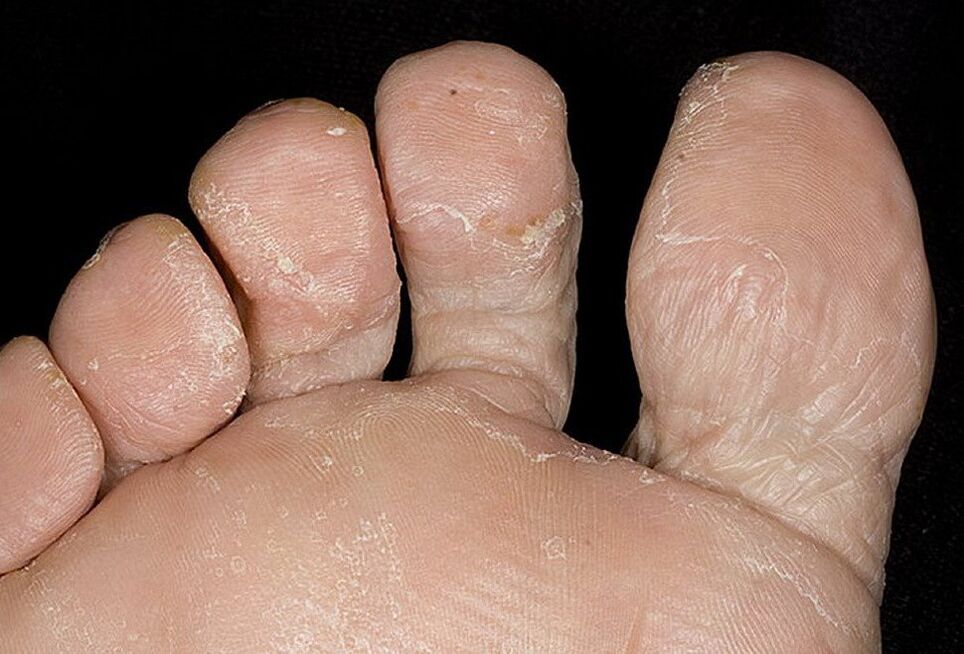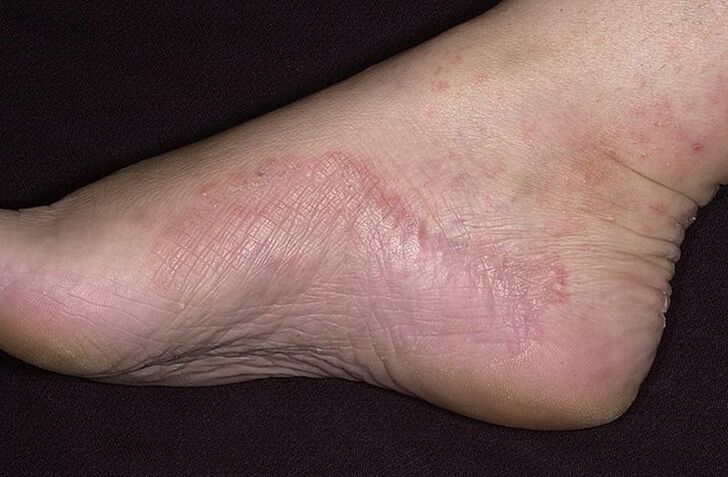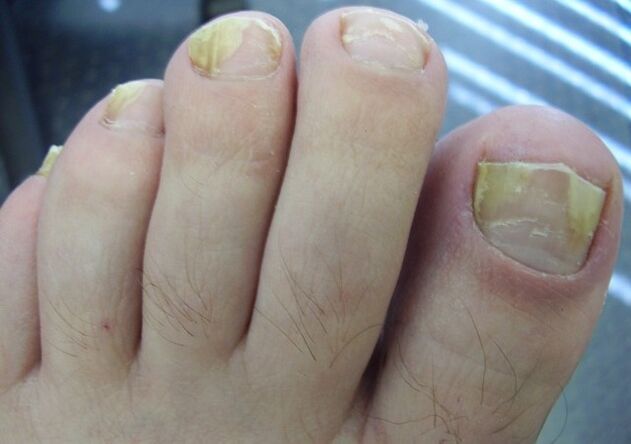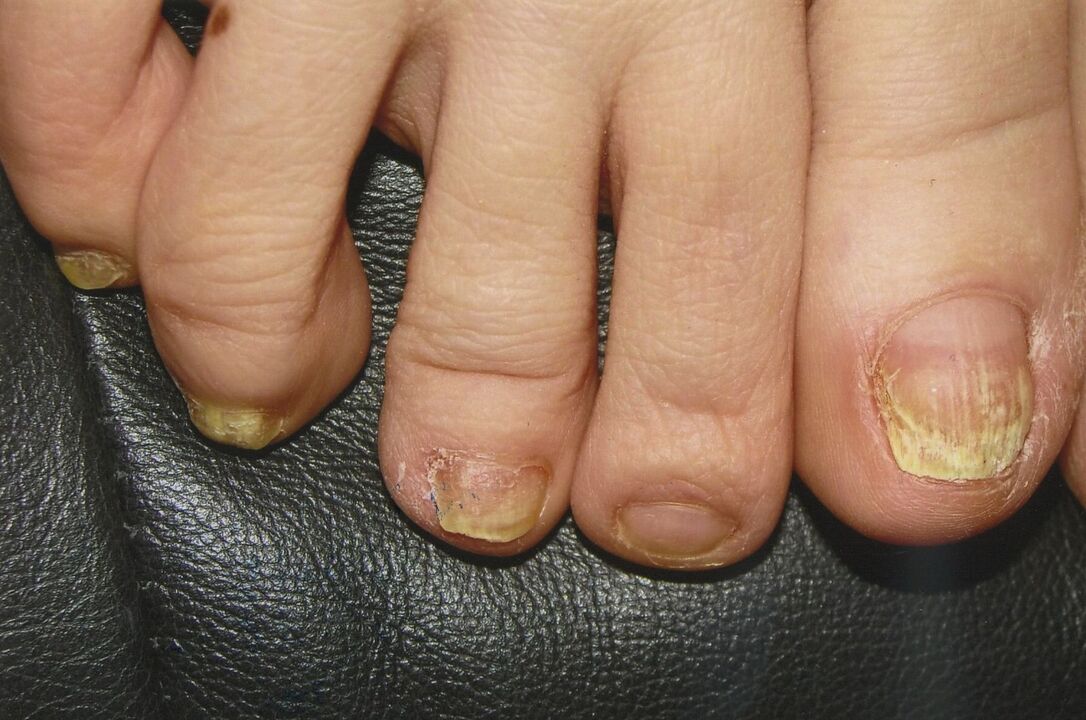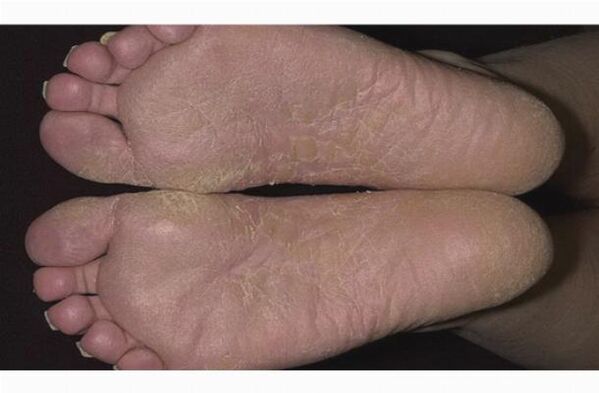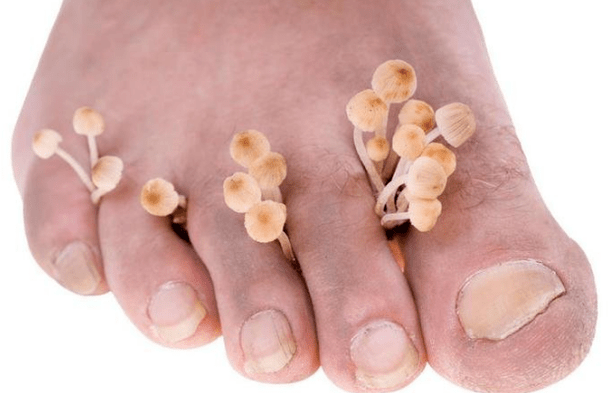
What does foot fungus look like?
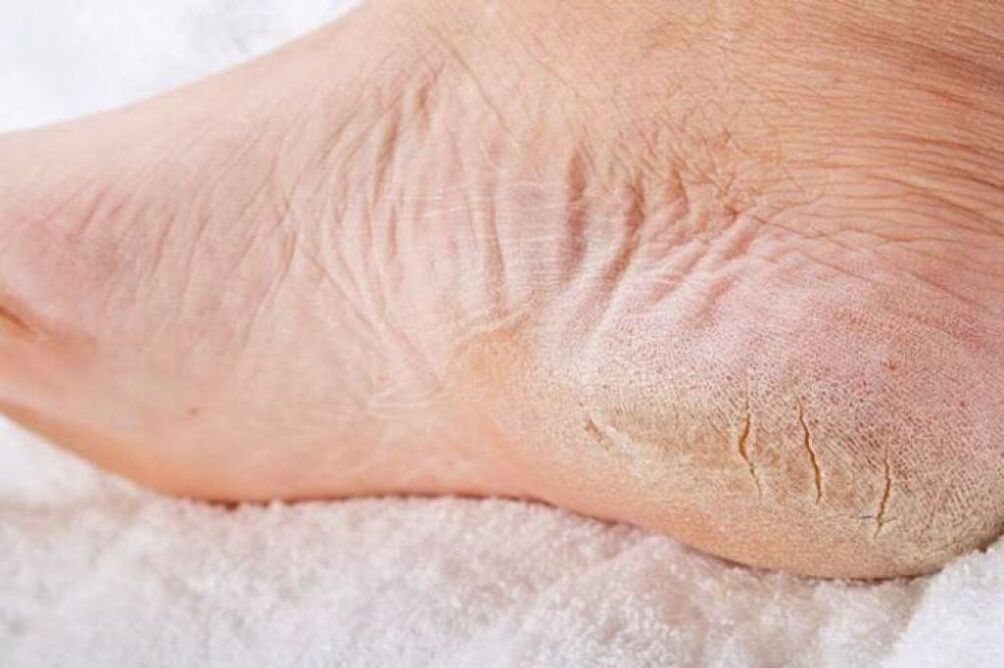
fungus on toes
disease symptoms
- The skin between the fingers becomes very dry and brittle, with small scales appearing;
- The appearance of small pustules with fluid on the skin, and if one of them ruptures, an unpleasant sensation will appear on the skin;
- The nail plate changes and its structure becomes more fragile;
- Due to the manifestations of the fungus, an unpleasant odor may develop on socks and shoes; this odor is quite pungent and specific.
Moderate At the first sign of peeling feet, you should consult a dermatologist immediately. These are the first signs of fungus. Further development of the bacteria occurs on the fingers, between the fingers and on the nails. Symptoms include redness of the skin, small cracks on the heels and feet, and itching and burning in larger lesions. Squamous hyperkeratosis The squamous hyperkeratosis stage of the disease is caused by mild swelling of the skin on the feet, which can also cause severe peeling of the skin on the feet and between the toes. Severe itching and burning sensation spread to the entire area of the foot, including the nails. The color of the nail plate changes from light yellow to gray, which causes the top layer of the nail plate itself to be destroyed. Symptoms of the hyperkeratosis stage of the fungus include the following: A rash on the skin of the feet, with red to blue blisters that then flake off severely and cause pain when walking. If you don't consult your doctor, infections can cooperate and become a serious source of infection. The entire process is accompanied by a bad smell coming from the feet. IntermittentThis stage is characterized by the development of deep cracks in the heel, accompanied by pain, and the development of erosive ulcers. The pain worsened significantly, causing the patient to be unable to stand normally. Sweating disorderThis stage is characterized by the rapid development of small purulent blisters, covering the entire area of the foot and toes in just a few days. Pustules can open on their own, causing red erosions. The wound may release a small amount of fluid after the skin dries slightly.
How to Treat Foot Fungus
- For external application, creams, ointments, sprays, solutions, varnishes should be used;
- Mandatory antifungal medication;
- For severe burning and itching, sedatives should be purchased to relieve painful symptoms;
- Since your immune system is weakened when fighting fungi, you'll need to take a series of vitamins and minerals that will help your body fight the infection with greater strength;
- If an infectious disease occurs at the same time, the dermatologist will prescribe a course of antibiotic treatment.
photo
